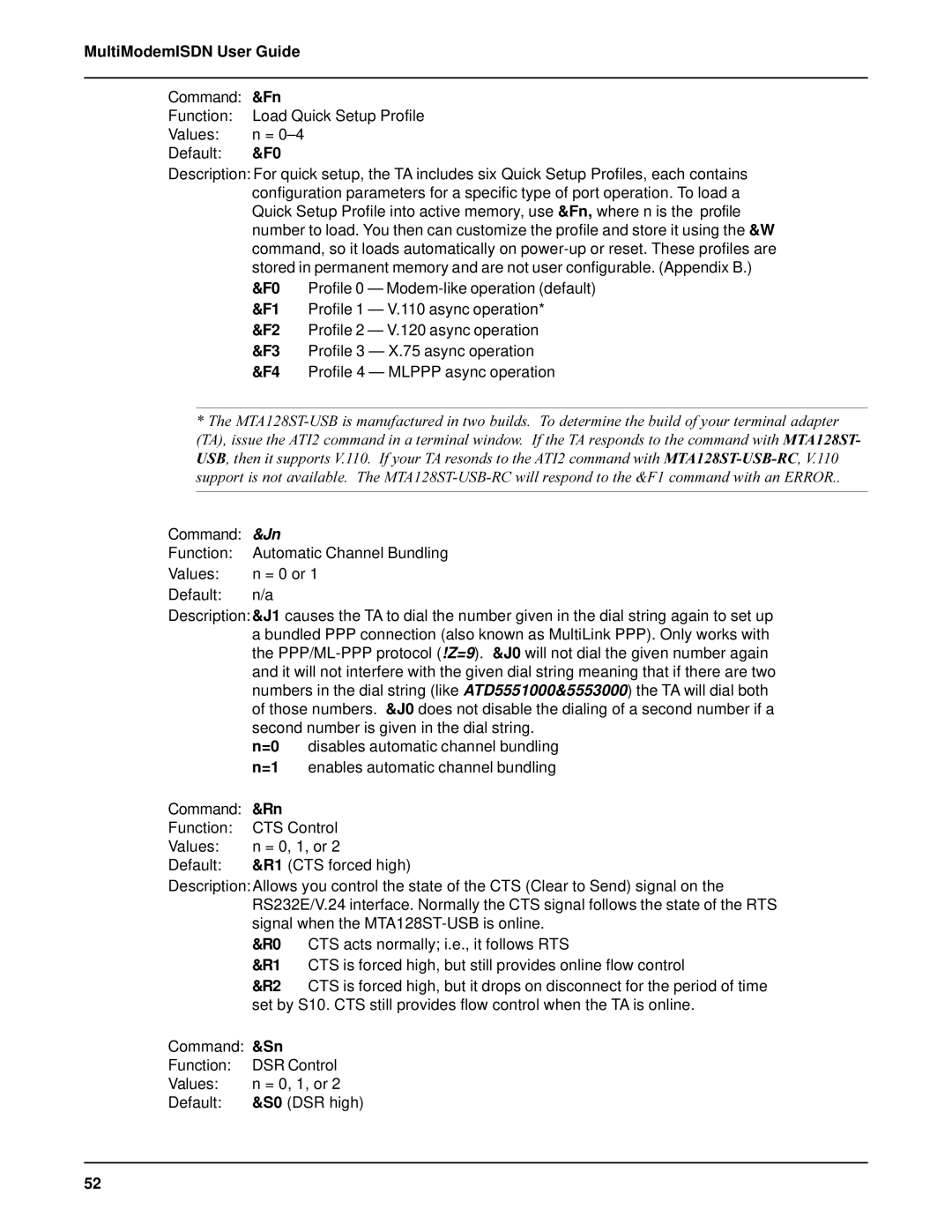
MultiModemISDN User Guide
Command: &Fn
Function: Load Quick Setup Profile
Values: n =
Default: &F0
Description: For quick setup, the TA includes six Quick Setup Profiles, each contains configuration parameters for a specific type of port operation. To load a Quick Setup Profile into active memory, use &Fn, where n is the profile number to load. You then can customize the profile and store it using the &W command, so it loads automatically on
&F1 Profile 1 — V.110 async operation* &F2 Profile 2 — V.120 async operation &F3 Profile 3 — X.75 async operation &F4 Profile 4 — MLPPP async operation
*The
Command: | &Jn |
Function: | Automatic Channel Bundling |
Values: | n = 0 or 1 |
Default: | n/a |
Description:&J1 causes the TA to dial the number given in the dial string again to set up
| a bundled PPP connection (also known as MultiLink PPP). Only works with | |
| the | |
| and it will not interfere with the given dial string meaning that if there are two | |
| numbers in the dial string (like ATD5551000&5553000) the TA will dial both | |
| of those numbers. &J0 does not disable the dialing of a second number if a | |
| second number is given in the dial string. | |
| n=0 | disables automatic channel bundling |
| n=1 | enables automatic channel bundling |
Command: &Rn |
| |
Function: | CTS Control | |
Values: | n = 0, 1, or 2 | |
Default: | &R1 (CTS forced high) | |
Description:Allows you control the state of the CTS (Clear to Send) signal on the | ||
| RS232E/V.24 interface. Normally the CTS signal follows the state of the RTS | |
| signal when the | |
| &R0 CTS acts normally; i.e., it follows RTS | |
| &R1 CTS is forced high, but still provides online flow control | |
| &R2 CTS is forced high, but it drops on disconnect for the period of time | |
| set by S10. CTS still provides flow control when the TA is online. | |
Command: &Sn |
| |
Function: | DSR Control | |
Values: | n = 0, 1, or 2 | |
Default: | &S0 (DSR high) | |
52
